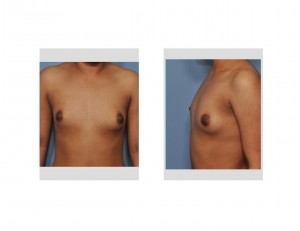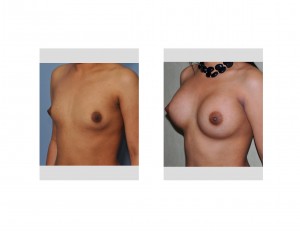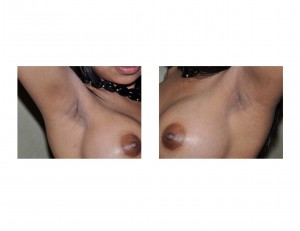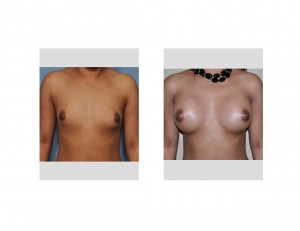Background: Breast augmentation is the most popular body plastic surgery procedure in women in the 18 to 35 year-old age group. The numbers of breasts implants placed has continued to increase every year. This is a testament to the success of the operation and is done across all ethnic groups. With the well known change in the immigration patterns in the U.S. over the past decade, Hispanic women are similarly seeking breast augmentation.
On the surface, breast enhancement in women of Hispanic heritage is no different than that of Caucasians or any other ethnic group. It is about making the breast larger and more full which is the goal of any woman having the procedure. But the thicker and increased skin pigment does make for different incision considerations. In addition, cultural considerations also help guide final breast size.

In reviewing the choices of saline vs silicone gel breast implants, her primary concern was that she wanted no scar anywhere on her breasts. This comes from a known observation of hyperpigmentation in darker and thicker skin types. While inframammary or lower breast scars generally remain hidden in the skin crease, when breast augmentation is done in a completely flat breast that scar may not be as hidden.
While breast size is largely an individual choice, the American concept of a big breast is not shared by many other ethnic backgrounds. Hispanic women tend to prefer a smaller and very round breast that has a perky quality to it. In women with very narrow chest diameters, it is important to not get the breast implant too far to the side which is easy to do.
Widely spaced breasts pose limitations on what the final result can be. While most women want their breast to be as close as possible and create cleavage, the preoperative position of the nipple-areolar complex controls the final position of the implant on the chest wall. Such wide spacing can only create breast mounds that will be further apart that a patient will want.


Case Highlights:
1)Breast augmentation in Hispanic women must take into increased consideration the location of the scar and the general desire for not too large of a breast size.
2)The transaxillary incision must be kept small and done carefully to limit its potential for hyperpigmentation and increased visibility.
3) High profile implants are preferred to give the most round breast shape as possible.
Dr. Barry Eppley
Indianapolis Indiana



